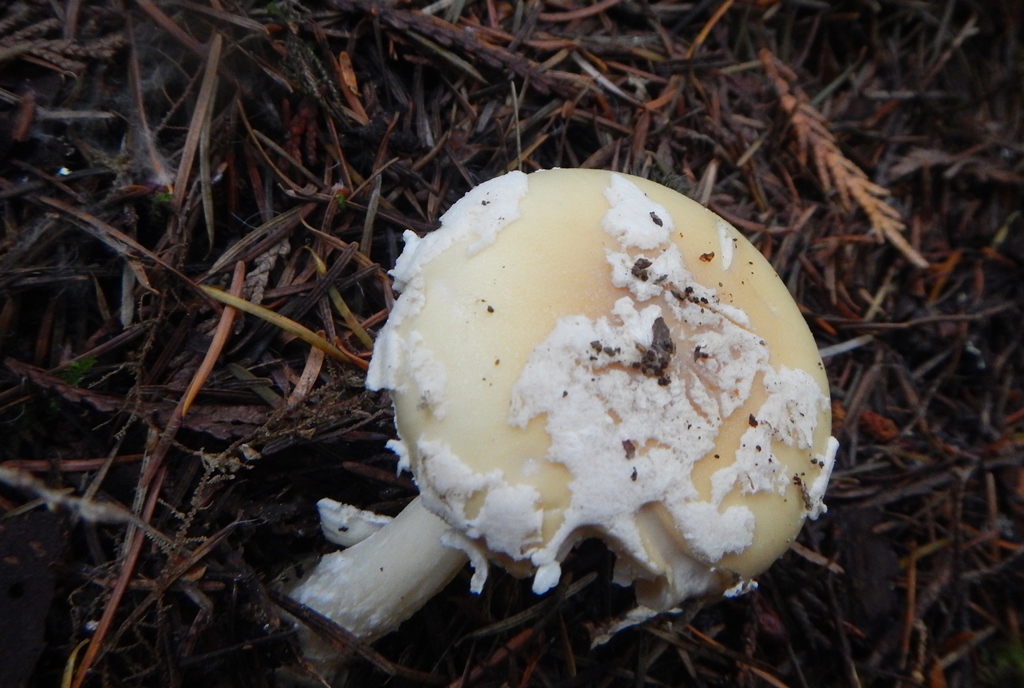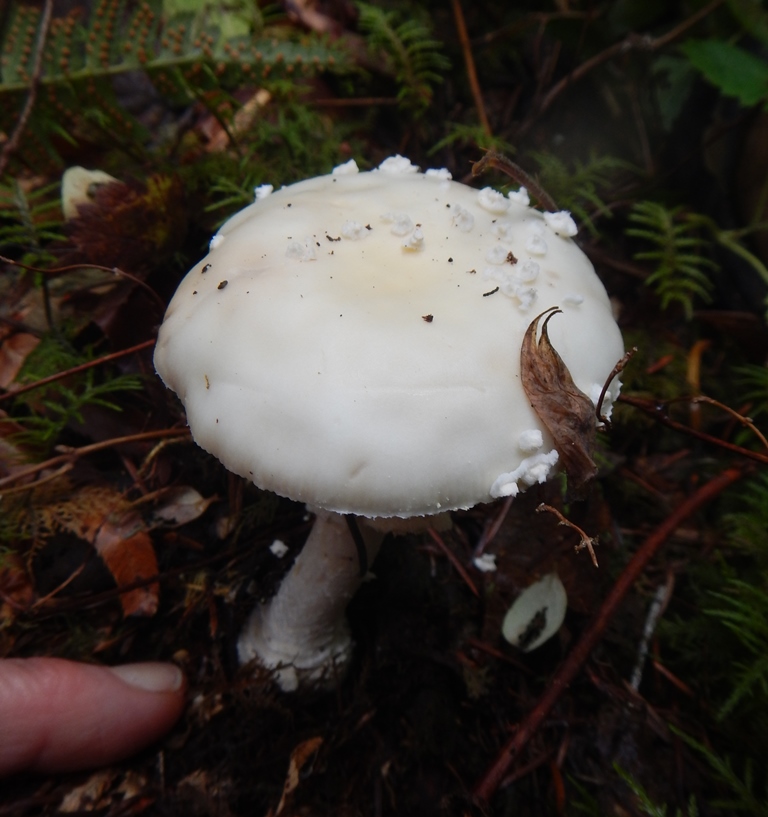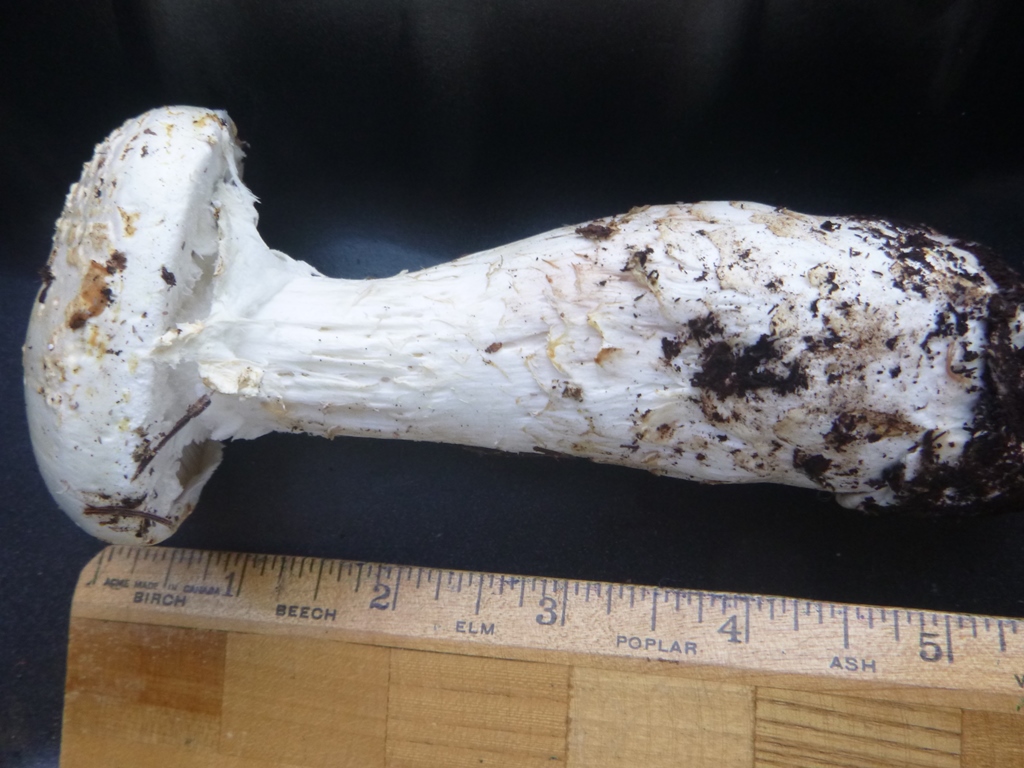Contributed by Alison M. Click an image to enlarge it.
Amanitas are amongst the most stunning, but toxic fungi.
In general, most species in the Amanita genus are easily recognizable through the following features (see illustration 1): a cap with “warts” which are the remnants of the universal veil that encased the embryonic fruiting body; at the base a distinct volva out of which the fruiting body grew, a ring around the upper part of the stem/stipe, again part of the universal veil; white spores.
First, the most commonly observed Amanita muscaria (fly agaric, photo 2) with its bright red cap and white warts. There is not total agreement on the varieties we have in the Pacific Northwest including A. muscaria var. flavivolvatus and A. muscaria var. alba (see MatchMaker for details).
Common to our area is also a brown species with white warts, Amanita pantherina (photo 3), as well as two with yellow caps and white warts – Amanita aprica and Amanita gemmata (photo 4). The former tends to appear in the spring, the latter in the fall. There is a broad colour range from bright to dull, apricot shades to pale lemon (photos 5 & 6). To add to the confusion, very young A. muscaria can be quite yellow in appearance.
Two white amanitas in our area:
- Amanita silvicola (photo 7), which has a short stubby stipe emerging from a round volva and is covered with lots of cottony tissue.
- Amanita smithiana, which by contrast has a long stipe, emerging from a bulbous base that tapers towards the “root” end (photos 8 & 9). Hence the latter might be mistaken for Tricholoma magnivelare (pine mushroom, photo 10) which of course has no warts, and is recognizable by its sweet cinnamon smell. As always, PICKER BEWARE.
This September, Kate and Gary found an early stage Amanita pachycolea (western grisette) on a path in their woods (photo 11). We located a mature example on the trail to McKenzie Lake in the Park. The cap is striate, often without warts, and the stipe is quite slender, emerging from a volva that is constricted half way up (photos 12 & 13).
A final word on the two most prominent amanitas with lethal amatoxins (the photos here are scanned from Siegel and Schwarz, Mushrooms of the Redwood Coast):
- Amanita ocreata,(western destroying angel), spring fruiting, with hardwoods (including various oak species) in California; not to my knowledge this far north (photo 14).
- Amanita phalloides (death cap), fruiting possible year round, with hardwoods (photo 15). It was introduced from Europe on the roots of the cork oak, and has become naturalized in California. It has spread north mostly through the movement of nursery ornamentals, and has reached Victoria and south Vancouver Island & Salt Spring Island (?), but has not been observed in the Comox Valley. [Editor’s note: Subsequent to this post, death caps have been observed here; see this later post.]















